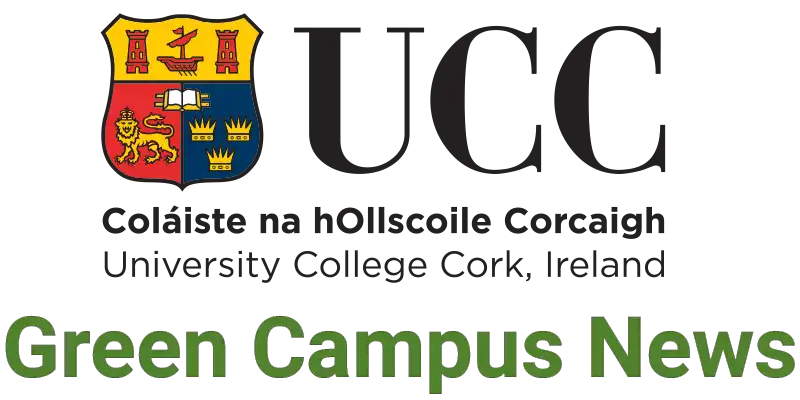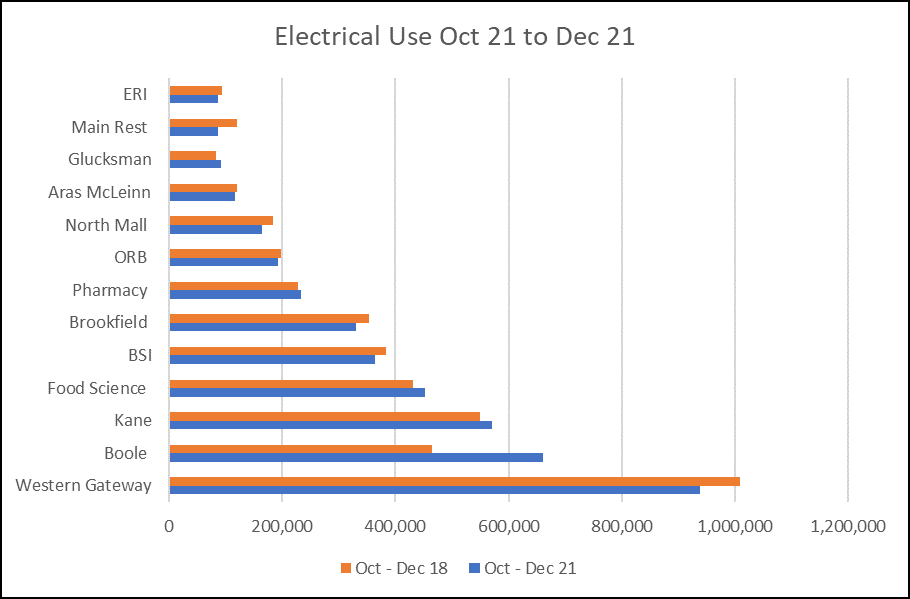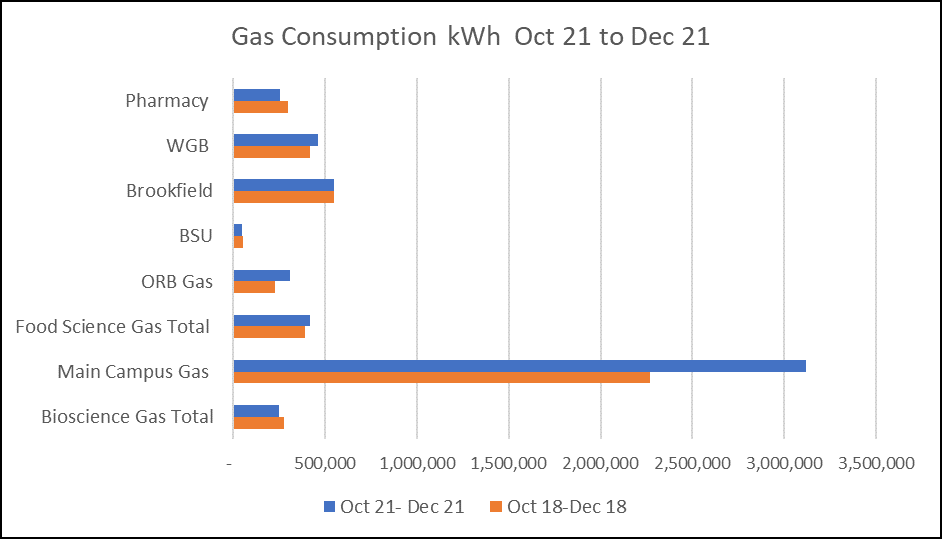In This Section
- Home
- About
- Student Led
- Research Informed
- Practice Focused
- Resources
- Case Studies
- Green Labs Community
- News
- Office of Sustainability and Climate Action
Electrical and Gas Consumption Semester 1 2021/22

Welcome to our Energy update for Electrical and Gas Consumption in Semester 1 2021/22. With activities across the University returning to near normal levels over semester 1 our electrical and gas consumption significantly increased when compared to the same period in 2020.
Our electrical consumption increased by 695,000 kWh on 2020 levels but was 52,000 kWh below our reference period (Oct- Dec 2018). The chart below illustrates the electrical consumption of our significant energy users over the first semester of 2021.

Top 5 Electrical Consumers.
- Western Gateway – Our single largest electrical user came in at 938,000 kWh, down from 1,008,000 kWh in 2018 with reductions mainly attributed to the reduced occupancy levels in the building.
- Boole Library reported a significant increase on its electrical consumption over the period, a trend that is expected to continue for semester 2. Despite the reduced occupancy levels in the building, the ventilation load for the building increased significantly as the air systems operated at full speed and for longer as the building opening times increased on previous years.
- Kane Building & Food Science – Electrical use in these buildings is largely driven by the research activities that take place in the area. The building saw a slight increase on its electrical consumption, mainly due to the increased running times of the ventilation systems.
- BSI – The Biosciences building reported a slight decrease in electrical consumption. The ventilation load in the building is relatively low as the majority of the building spaces are naturally ventilated and as such the buildings electrical use was not negatively impacted by COVID operating protocols.With the exception of the Main Rest, the electrical consumption across the remaining buildings came in as expected for the semester. With the reduced service offering the Main Rest avoided consuming 45,000 kWh of electricity over the period.A concerted effort by the B&E office and the various departments to shut off non-essential services over the Christmas period saw a 3% reduction in the hourly consumption rate, when compared to previous Christmas periods.The consumption of natural gas, which is the fuel used to heat our buildings, increased by 850,000 kWh in the 1st semester, a 12% increase on previous years. We know that the external temperature has a significant influence on our gas use, and this was exasperated over the semester by the increased ventilation loads and the promoting of keeping the windows open in naturally ventilated spaces.

Top 5 Gas Consumers
- Main Campus Gas – By far our largest gas consumer across the Estate, the main campus gas supplies fuel to the district heating network on campus that in turn supplies heat to the Kane, Electrical Eng, Civil Eng, Main Rest, The Quad and the Boole Library buildings. The gas consumed by the district heating network has increased significantly due to the COVID ventilation protocols in place while the extended opening times of the Boole Library and associated ventilation load would be the primary driver for the increase.
- Brookfield Building – Gas use in the building remained relatively steady for the 1st semester despite the increase in opening times and weekend occupancy of classes.
- Western Gateway – Gas use is largely driven by the humidity requirement s for specialist lab areas and is heavily influence by the external conditions. The majority of the building is heated by the Ground Source Heat Pump which also recovers the waste heat from the data centre located in the building.
- Food Science Building – The heating schedules in the building have remained relatively unchanged despite the reduced occupancy levels and the amount of gas consumed has remained relatively steady, when compared to previous years.
- O’Rahilly Building – the gas consumption increased over semester 1 when compared to previous years. The cause of the increase can be explained by the increased heating load as a result of windows been open more and the loss of the boiler control platform for 3 weeks while the system was upgraded for a new air source heat pump.While occupants were encouraged to open windows and ventilate the spaces over the semester the Estates office continued to closely monitor the room conditions, building occupancy levels and occupant feedback to limit the amount of gas consumption, where possible.
Energy Saving Projects Completed.
A number of energy saving projects were completed over the semester. Despite significantly increasing their energy footprint the Library continue to look for new ways to conserve energy and were in a position to close areas within the Library at low occupancy periods, avoiding 15,000 kWh. A number of lighting control upgrades took place over the month of December and should deliver a reduction of 25,000 kWh over the next 12 months.
If you have any comments, observations or energy saving suggestions please get in contact with Pat at p.mehigan@ucc.ie
Green Campus
Contact us
University College Cork, College Road, Cork T12 YN60,
- greencampus@ucc.ie
- Dr Maria Kirrane, Sustainability Officer - m.kirrane@ucc.ie
